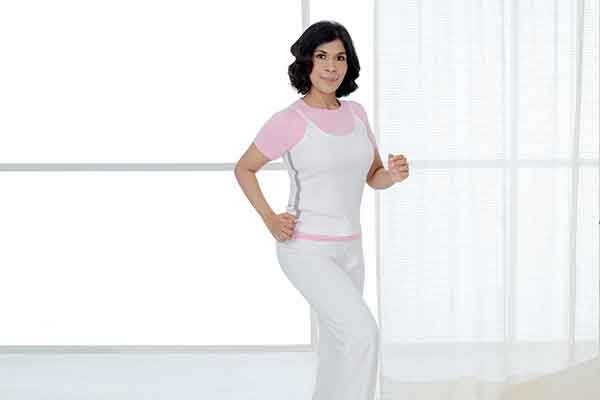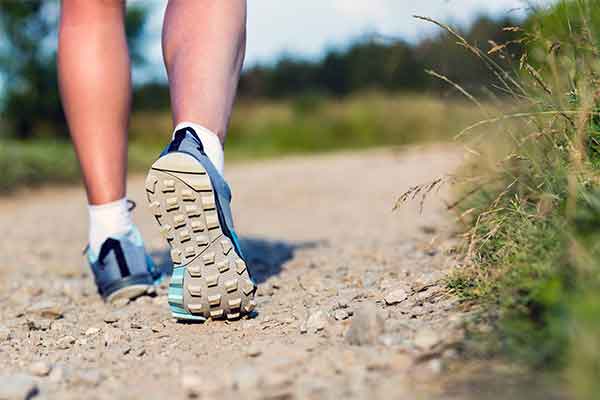Exercise and Hypertension

Get hyper about fighting it!
- Do you get headaches often?
- Spells of dizziness at times?
- Bouts of anxiety?
If you’ve just said yes, then you may be suffering from hypertension. Hypertension, referred to as the ‘silent killer’ is especially dangerous because it often has no specific warning signs or symptoms. Of those who have high blood pressure, almost 35 percent don’t even know they have it. Fortunately, it is easy to monitor blood pressure by having it regularly checked.
WHAT IS HIGH BLOOD PRESSURE?
Blood pressure is the force of blood pushing against the walls of the arteries (blood vessels). Blood pressure rises and falls throughout the day. When the pressure stays elevated over time, greater than 140/90mmHg, it is then called high blood pressure or hypertension.
WHY SHOULD BLOOD PRESSURE BE CONTROLLED?
High blood pressure causes the heart to work too hard. It increases the risk of heart disease and stroke. It can damage the eyes, kidneys, liver and the nervous system. Although genes play a role in the occurrence of hypertension, lifestyle habits play a crucial part in controlling this condition.
CAUSES BEHIND THE SILENT KILLER
- Obesity
- High-salt diets
- Smoking
- Alcohol consumption
- Stress
- High caffeine consumption
- High cholesterol levels
TAKE CHARGE NOW!
- Maintain a healthy weight; lose weight if you are overweight.
- Exercise regularly – a minimum of 30-minutes of a moderate intensity exercise regime such as walking is recommended.
- Limit your salt intake to less than 2,400mg (about 1-teaspoon). A high intake of sodium in the diet can increase blood pressure in about 40% of individuals.
- Consume fruits, vegetables and a low-fat diet.
- If you drink alcohol, do so in moderation.
- Relaxation and deep breathing exercises are beneficial.
- Avoid too much caffeine. Several cups of coffee can mildly increase blood pressure throughout the day.
TIPS TO CONTROL HYPERTENSION
REGULAR EXERCISE IS A GREAT SHIELD
Physical activity is one of the most important steps for preventing and controlling high blood pressure. Those who are physically active have a 25 – 50 percent lower risk of developing hypertension. Findings from multiple clinical trials indicate that exercise lowers blood pressure as much as some drugs. Regular, low to moderate impact aerobic exercise can reduce both systolic and diastolic blood pressure by an average of 10mm Hg.
CARDIOVASCULAR EXERCISE
Cardiovascular exercises should be performed 4 to 6 days a week, for a duration of 30 to 60 minutes. Begin the exercise session with a gradual warm-up lasting for 10 minutes.
EXAMPLES OF CARDIOVASCULAR EXERCISES:
- Walking
- Bicycling
- Rowing
- Swimming
- Golf (walking the course)
- Low-moderate impact aerobics
STRENGTH TRAINING EXERCISES
Strength training exercises should be safe and designed with the help of fitness professional. Heavy resistance weight training exercises are notrecommended as they can elevate blood pressure; do weight-training exercises using light resistance.
RELAXATION EXERCISES
DEEP BREATHING
Shallow breathing deprives the body of oxygen. The heart automatically compensates for this lack by pumping more blood. This increases the heart’s workload and can elevate blood pressure. Simple deep breathing exercises and pranayama decrease stress and can lower blood pressure.
TWO SIMPLE BREATHING EXERCISES
1. Simple deep breathing : Do slow and deep inhalations and exhalations.
Benefits
- Improves concentration
- Increases lung capacity
- Calms the mind
2. Diaphragm breathing : Inhale, and feel the stomach expand, exhale, and the feel stomach sink down.
Benefits
- Strengthens the diaphragm.
- Helps conditions such as anxiety and slows down the respiration rate
Massage
Try going for a massage once a fortnight or month. It will help release muscular tension and relax your body.
MEDITATION
Meditation helps calm the body and mind bringing them into a better state of balance.
Restful sleep
Sleep allows the pulse to slow down and relaxes the body. A good night’s sleep reduces overall fatigue, anxiety and stress.
WATCH YOUR SALT INTAKE!
Most of us consume more salt than we need. Limit salt intake to 2,400 milligrams per day (1-teaspoon). The low sodium diet not only helps to keep the blood pressure from rising, but also helps blood pressure medicines to work better.
When you eat too much salt, the body retains water to “wash” the salt from the body. This can result in high blood pressure.
COMMON FOODS ARE HIGH IN SODIUM
- Processed and packaged foods such as canned soup, ketchup, pickles, and soy sauce.
- Meats, sausage, bacon and ham.
- Pretzels, popcorn, chips and peanuts.
THE HERBAL SALT SUBSTITUTE
Mix spices such as fennel, basil, oregano, black pepper and tarragon. Use them to enhance the flavor of your food. They have active ingredients that can reduce blood pressure and can be used as a salt substitute.
VALUABLE VITAMINS AND MINERALS
Foods high in calcium, potassium, magnesium, vitamin C and omega-3 fatty acids help regulate blood pressure levels.
Good sources of calcium – milk, fresh cottage cheese, yogurt, broccoli, cabbage, soybean, salmon.
Good sources of potassium – coconut water, tomatoes, bananas, beetroot, avocadoes, oranges.
Good sources of magnesium – spinach, almonds, sunflower seeds, barley.
Good sources of Vitamin C- Red cabbage, bell peppers, citrus fruits, kiwis, strawberries.
Vegetables that are beneficial: The pick of the crop
Celery: Oriental medicine practitioners have found celery beneficial for lowering blood pressure.
Garlic: Garlic is a wonder drug for the heart. Eating as little as one clove a day can help manage hypertension.
Tomato: Tomatoes are high in gamma-amino butyric acid (GABA), a compound that can lower blood pressure.
Saffron: Saffron contains a chemical called crocetin that lowers blood pressure. You can add it to food or even brewed tea to give it an exotic flavor.
OMEGA-3 FATTY ACIDS
The presence of these good fatty acids can prevent blood clots that cause heart disease.
Sources are: Fish – salmon, tuna fish, and trout.
AMERICAN HEART ASSOCIATION (AHA) RECOMMENDATIONS
- Eat fish and white meat instead of red meat.
- Remove skin from poultry before cooking.
- Use low fat milk instead of whole milk.
- Consume no more than 2 egg yolks per week.
- Avoid packaged, pre-cooked foods.





